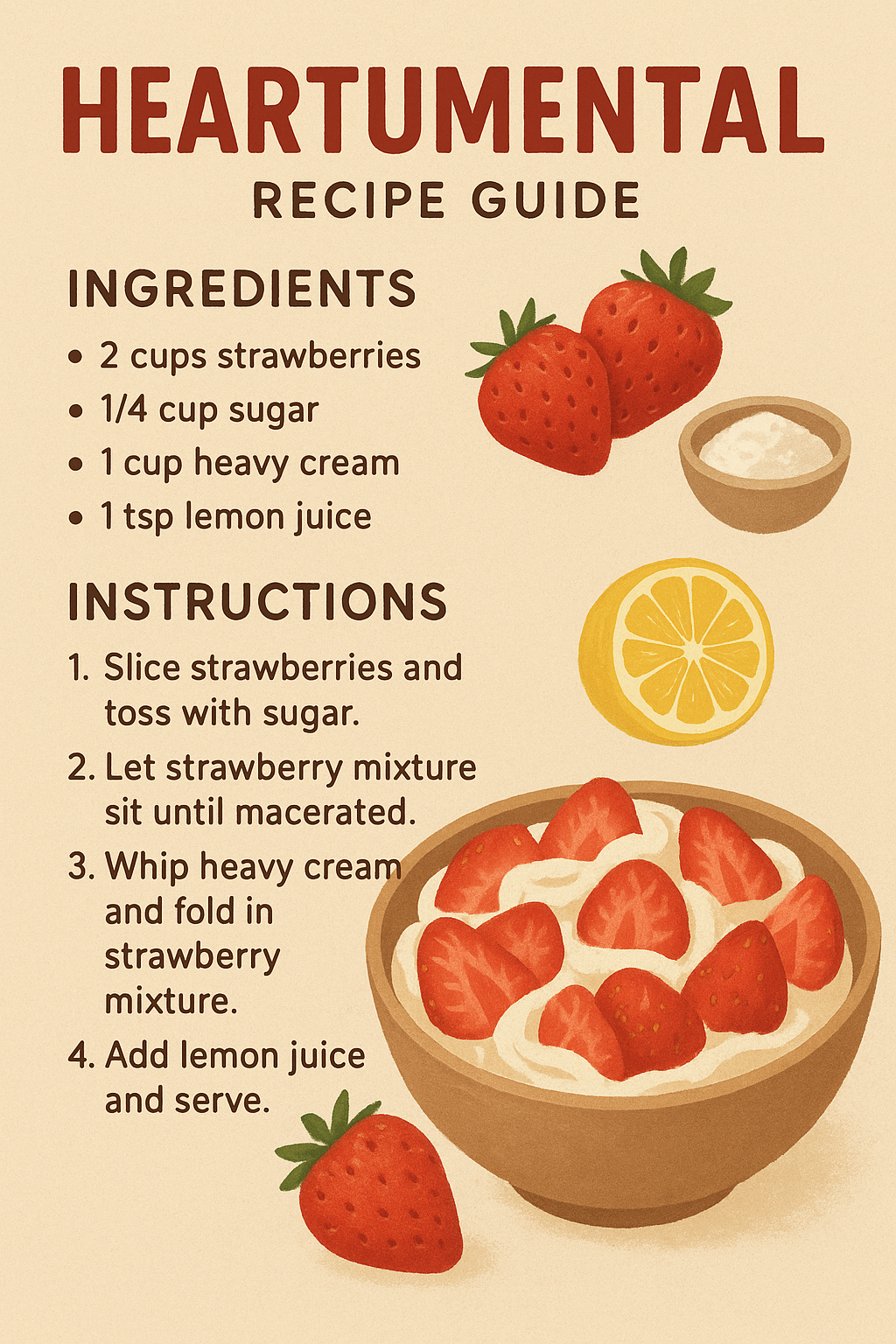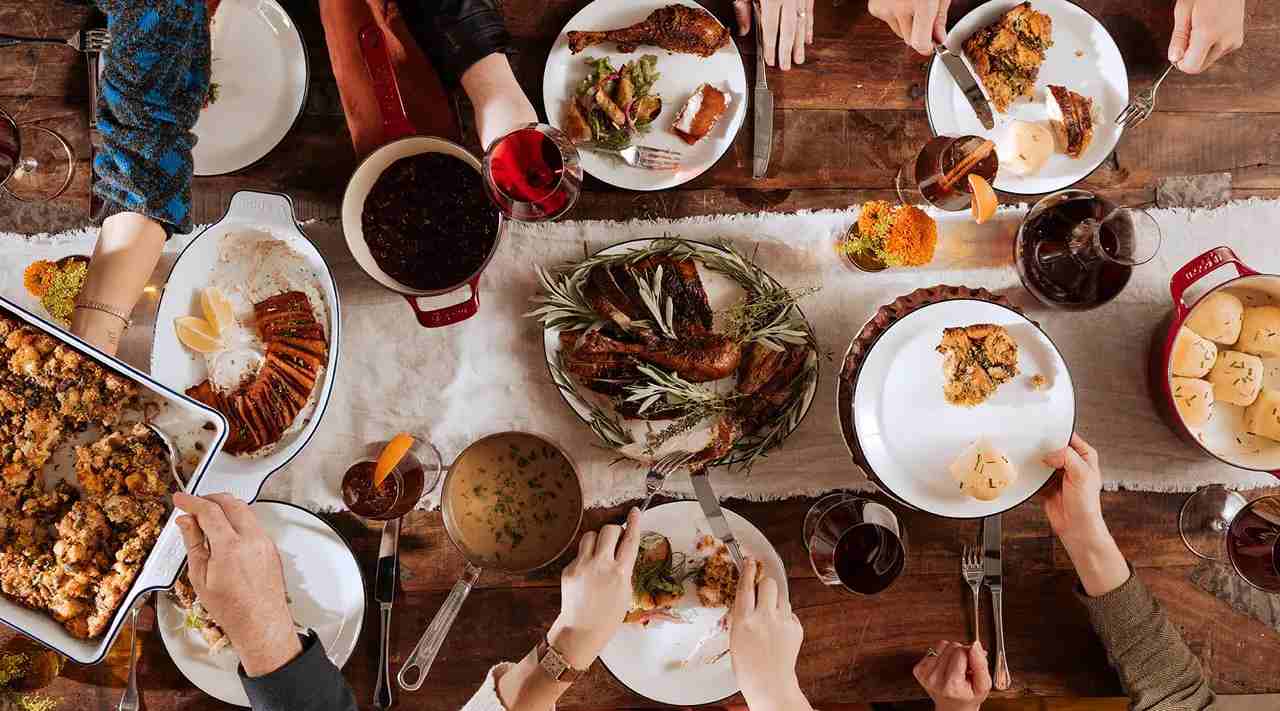Recipe Guide Heartumental: Cooking with Intention, Emotion & Health

In a world where recipes are everywhere — in apps, social media, cookbooks — Recipe Guide Heartumental stands out by weaving together three essential threads: heart, fundamental technique, and mindful health. It’s not just about what’s on the plate, but how it gets there and why. In this guide, we’ll explore the philosophy behind “Heartumental” cooking, the practical techniques, sample recipes, and how you can make this style your own.
1. Understanding the Heartumental Philosophy
To cook “Recipe Guide heartumental” is to treat cooking as more than a chore — it’s an act of care, connection, and balance. Let’s break down what that means.
1.1 What does “Heartumental” mean?
The word is a blending of heart + fundamental, suggesting that cooking should be grounded in basic, solid technique even while being suffused with emotion and intention. A recipe guide Recipe Guide heartumental aims to:
- Nourish both body and soul
- Honor tradition and memory
- Be accessible to cooks of varying skill levels
- Encourage awareness, presence, and mindful practices
Instead of chasing gimmicks or overcomplicated dishes, Recipe Guide heartumental cooking prioritizes clarity, intention, and emotional resonance.
1.2 Why this approach matters
In fast-paced life, many people cook just to get by. But the Recipe Guide heartumental perspective reminds us that food has power beyond nutrients: it can heal, bring people together, evoke memories, and calm the mind.
- Emotional nourishment: The process of cooking becomes therapeutic, a way to express care.
- Cultural roots: A dish can connect you to family traditions, cultural stories, or heritage.
- Health foundation: The approach encourages wholesome ingredients and methods friendly to long-term well-being (for example, lighter fats, whole grains, herbs, seasonal produce).
- Sustainability & mindfulness: Choosing local, fresh ingredients, respecting resources, and minimizing waste become part of the philosophy.
Thus, the Recipe Guide heartumental recipe guide is not just a collection of recipes — it’s a manifesto of mindful, meaningful cooking.
1.3 The balance of heart and fundamentals
What truly distinguishes Recipe Guide heartumental recipes is this balance:
- On one hand, you still want good technique: proper cuts, heat control, seasoning, cooking times.
- On the other, you bring in intention: why you chose these ingredients, what memory or feeling you hope to evoke, how you plate or present it, how you invite others to experience it.
This duality — technique + intention — is what makes Recipe Guide heartumental cooking powerful. The fundamentals give you stability; the heart gives you soul.
2. Core Principles & Techniques in a Heartumental Recipe Guide

To turn the philosophy into practice, you need a toolbox of techniques, principles, and habits. This section outlines the building blocks.
2.1 Mindful ingredient selection
A heartumental recipe guide Heartumental emphasizes selecting ingredients not just for flavor, but also for meaning and nutrition.
- Seasonal & local: Choosing what’s in season supports freshness, taste, and sustainability.
- Whole foods over ultra processed: Minimize packaged, overly refined ingredients.
- Herbs, spices, aromatics: Use fresh herbs, citrus, roots (ginger, garlic) to elevate without excess salt or fat.
- Quality fats: Favor healthier oils (extra virgin olive, avocado, maybe nut oils) in moderation.
- Cultural or sentimental touches: Maybe a spice or vegetable reminds you of childhood, or your grandmother’s kitchen — those touches matter emotionally.
2.2 Cooking methods that support health & flavor
The way you cook matters almost as much as what you cook.
- Roasting & baking: Bring out natural sweetness in vegetables, minimize oil while achieving crisp textures.
- Sautéing / light pan cooking: With good fat and controlled heat, you can get flavor without heavy greases.
- Steaming / simmering: Great for delicate foods, preserving nutrients.
- One-pot / sheet pan meals: Reduce cleanup, simplify logistics — ideal for weeknight Recipe Guide heartumental meals.
- Slow cooking / gentle braises: Good for tougher cuts or layers of flavor, especially when time allows.
Importantly, in Recipe Guide heartumental cooking you move with awareness: tasting as you go, pausing, adjusting, savoring aromas.
2.3 Mindful cooking habits
Technique alone is not enough — how you cook changes everything.
- Taste as you go: Don’t just follow instructions blindly. Adjust salt, acidity, sweetness.
- Pause & breathe: Before jumping to the next step, take a moment to breathe, to smell, to feel.
- Clean-as-you-go: Reduces stress, maintains clarity, and keeps the space inviting.
- Engage senses: Touch ingredients, listen to sizzle, watch color changes. This turns cooking into a meditative act.
- Share stories: If you’re cooking with family or friends, tell the stories behind ingredients or dishes.
These habits transform cooking from a mechanical task into a ritual.
2.4 Planning & adaptation
A robust recipe guide Recipe Guide heartumental also helps with planning and flexibility.
- Menu planning: Set aside time weekly to pick meals, shop, and prep small parts in advance.
- Ingredient adjacency: Use overlapped ingredients (e.g., herbs, grains) across meals to minimize waste.
- Adaptability: Swap ingredients to respect seasons, dietary needs (gluten-free, vegetarian), or availability.
- Batch cooking / prep: Chop vegetables ahead, toast grains, make dressing in advance. These steps free you up for mindful cooking later.
Planning allows you to cook with less stress and more joy.
3. Sample Heartumental Recipes (Beginner-Friendly & Heartful)
Here are some sample recipes you can try, which illustrate how Recipe Guide heartumental cooking works in practice.
3.1 Hearty Lentil & Herb Soup
Servings: 4
Prep time: 10 min | Cook time: 25–30 min
Ingredients
- 1 cup brown or green lentils, rinsed
- 1 tablespoon extra virgin olive oil
- 1 onion, finely chopped
- 2 garlic cloves, minced
- 2 carrots, diced
- 2 celery stalks, diced
- 4 cups low-sodium vegetable broth
- 1 bay leaf
- ½ teaspoon cumin
- ½ teaspoon smoked paprika
- Salt & pepper, to taste
- Handful fresh parsley or cilantro, chopped
- Juice of half a lemon
Instructions
- Heat olive oil in a pot. Sauté onion, garlic, carrots, and celery gently until softened (about 5–7 minutes).
- Add lentils, broth, bay leaf, cumin, paprika. Bring to a gentle boil, then reduce heat and simmer for ~20–25 minutes until lentils are tender.
- Remove bay leaf. Stir in fresh herbs and lemon juice. Taste: adjust salt, pepper, perhaps a little extra lemon or broth.
- Serve warm, optionally with a slice of whole grain bread or a sprinkle of chili flakes.
Recipe Guide Heartumental notes: As you cook, take a moment to breathe in the aroma. Think of warmth, healing, comfort. When stirring, reflect on how each vegetable contributes, and pause before serving to express gratitude for nutrients and life.
3.2 Rainbow Herb Salad with Lemon-Tahini Dressing
Servings: 2–3
Prep time: 10 minutes | No-cook
Ingredients
- Mixed greens (spinach, arugula, kale)
- 1 red bell pepper, thinly sliced
- 1 small cucumber, chopped
- 1 carrot, julienned
- 2 tablespoons fresh parsley or mint, chopped
- ¼ cup cooked quinoa or couscous (optional)
Dressing
- 2 Tbsp tahini
- 1 Tbsp lemon juice
- 1 Tbsp olive oil
- 1 teaspoon maple syrup or honey
- Water to thin
- Salt & pepper
Instructions
- In a bowl, combine greens, bell pepper, cucumber, carrot, fresh herbs, optional grain.
- Whisk all dressing ingredients; adjust consistency and taste.
- Pour dressing over salad and toss gently. Taste again; perhaps add more lemon or herbs.
- Serve immediately.
Recipe Guide Heartumental touch: Think about color balance — let your eyes enjoy the meal before tasting. Pause before eating; appreciate the textures and freshness of each bite.
3.3 Sheet Pan Roasted Vegetables with Chickpeas & Herbs
Servings: 3–4
Prep time: 10 min | Cook time: 25–30 min
Ingredients
- 1 sweet potato, peeled & cubed
- 1 zucchini, sliced
- 1 red onion, cut into wedges
- 1 bell pepper, chopped
- 1 can (15 oz) chickpeas, drained & rinsed
- 2 Tbsp olive oil
- 1 tsp smoked paprika
- ½ tsp ground cumin
- Salt & black pepper
- Fresh herbs (rosemary, thyme, parsley)
- Lemon wedges
Instructions
- Preheat oven to 425°F (220 °C).
- Toss vegetables + chickpeas with olive oil, spices, salt, pepper on a sheet pan. Spread in one layer.
- Roast for ~20–25 minutes, stirring halfway, until veggies are tender and edges caramelized.
- Remove, sprinkle fresh herbs and a squeeze of lemon. Taste — adjust seasoning if needed.
- Serve as main or alongside a grain (rice, quinoa).
Recipe Guide Heartumental mindset: As the vegetables roast, enjoy their scent spreading through the kitchen. Take that breathing moment. When plating, arrange in a way that feels pleasing to you. This aesthetic intention matters.
4. How to Incorporate the Heartumental Guide into Your Life
A recipe guide works best when integrated into your habits. Here are practical ways to embed Recipe Guide heartumental cooking into your routine.
4.1 Make it a weekly ritual
Set a time each week (e.g., Sunday afternoon) to plan your meals, shop mindfully, and do some basic prep (wash greens, cut veggies, soak legumes). This gives you breathing room during the week for more mindful cooking.
4.2 Journal your cooking & emotions
Keep a Recipe Guide Heartumental Meal Journal. For each recipe you try, note:
- What ingredients you used
- What you felt while cooking
- What changes you would make next time
- Who you shared the meal with
- What you were grateful for
Over time, this becomes a living, evolving recipe collection infused with memory and intention.
4.3 Start small — one recipe per week
If you’re new, adopt one Recipe Guide heartumental recipe per week. Focus less on variety and more on depth: experience that recipe fully, notice how it affects mood, energy, joy.
4.4 Invite others into the kitchen
Cooking with someone else magnifies the intention. Share tasks, swap stories while chopping, ask for input on seasoning. The emotional connection during preparation is as important as the meal itself.
4.5 Reflect after mealtime
After eating, take a moment: How did the meal make you feel? Satisfied? Energized? Comforted? This reflection helps you fine-tune future recipes and strengthens your connection with food.
5. Challenges & Tips to Overcome Them
Any shift in cooking mindset comes with friction. Here’s how to navigate common obstacles when adopting the Recipe Guide heartumental recipe guide.
5.1 Time constraints
Challenge: People feel they don’t have time for mindfulness in the kitchen.
Tip: Use one-pot or sheet pan meals. Prep ingredients ahead. Combine a bit of intention (a moment of breath, slower chopping) even if time is short — even small pauses matter.
5.2 Ingredient access & cost
Challenge: Local, fresh or specialty ingredients may be hard to find or expensive.
Tip: Adapt. Use frozen vegetables, dried herbs, local substitutes. The heartumental approach is flexible; intention matters more than perfection.
5.3 Overwhelm with too many recipes
Challenge: Recipe overload — too many choices, too many ingredients.
Tip: Start with a small selection of 3–5 favorite recipes. Rotate them. Add one new recipe monthly. Let your journal help you revisit favorites.
5.4 Maintaining consistency
Challenge: Enthusiasm wanes, life pressures interfere.
Tip: Make cooking rituals small and sustainable. Honor rest days. Focus on quality, not quantity. Remind yourself of why this style matters to you.
5.5 Perfectionism & fear of mistakes
Challenge: Worrying that recipes must be exact.
Tip: Embrace flexibility. Part of heartumental is adapting, tasting, adjusting. Mistakes teach more than flawless execution. Be curious, not judgmental.
6. The Broader Impact: How Heartumental Cooking Affects Your Life
This isn’t just about meals. Over time, adopting a recipe guide heartumental can ripple through your emotional, relational, and wellness life.
6.1 Emotional well-being
Cooking with intention becomes a form of self-care. It builds patience, gratitude, presence — attributes that carry beyond the kitchen into stress, relationships, and mental health.
6.2 Deeper relationships
When you prepare food with care, sharing it becomes a gesture of love. Conversations, memories, laughter often follow. The act of serving is part of the artistry.
6.3 Greater food awareness & sustainability
You become more attuned to where food comes from, seasonal rhythms, waste reduction, ingredient quality. This awareness often leads to better choices, less waste, and a healthier relationship with food.
6.4 Lifelong learning
Even experienced cooks can benefit. The heartumental approach encourages not settling into autopilot. You remain curious, reflective, and always evolving in how you cook, taste, and live.
7. Final Reflections & Invitation
Recipe Guide Heartumental is more than a trend — it’s a way to reclaim the kitchen as a space of intention, healing, and connection. It reminds us that cooking is not just fuel, but expression.
If you adopt even a few of these principles — one reflective pause in the kitchen, one journal entry, one mindfully cooked dish — you begin the journey. Over time, those small steps compound. The cooking becomes richer, your relationship with food deeper, your home warmer.
Take one of the sample recipes above, or choose one you already love. Don’t rush. Pause. Breathe. Taste. Serve with meaning. That is the heartumental way.
If you like, I can send you a free downloadable heartumental recipe journal template or a week’s full heartumental meal plan to get you started. Do you want me to prepare that for you?
You May Also Read
BetterThisFacts Info fromBetterThisWorld

